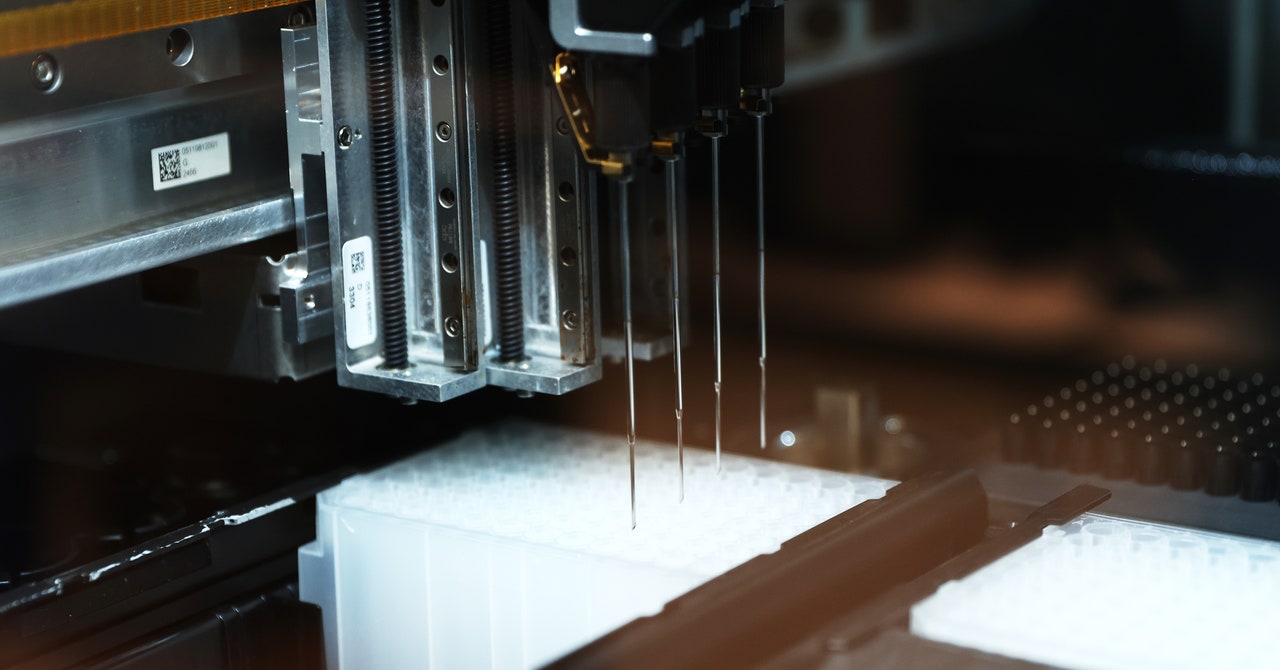
But while a monkeypox test already existed, it required lab workers to do each step by hand, Morice says. Federal guidelines say testing should be done only by swabbing the lesions of a person suspected to have the virus. These lesions look like pimples or blisters and can appear on the face, hands, feet, around the genitals or anus, or inside the mouth or rectum. Then the swabbed samples undergo a PCR—or polymerase chain reaction—test, which involves extracting genetic material and amplifying it to look for the presence of monkeypox virus’s DNA. When done manually, it means multiple steps of adding fluid, mixing reagents together and isolating the DNA.
That makes testing slow going. Commercial labs like the Mayo Clinic have been working to automate the process. Until recently, the clinic was able to process only 20 to 30 tests a day using the manual protocol, but soon it will be able to run several hundred tests a day, says Morice.
This kind of test raises some other issues too. “The current tests force you to swab a lesion. For people with internal lesions, that might not be possible, or it’s very painful,” Makofane says.
A monkeypox test can’t be given until a person has visible symptoms—and it can take several days for a rash to appear. Some people may have very subtle, or very few, lesions. While it’s not clear if the disease can spread before the blisters form, Rivers says it would be better to catch an infection earlier on, so that people can access treatment and vaccines as soon as possible. For the best chance of preventing the onset of the disease, the CDC says, the vaccine should be given within four days from the date of exposure.
Like Covid-19 testing in the early days of the pandemic, monkeypox tests must be ordered by a physician. Morice says many doctors might not know to test for monkeypox because it’s such a new disease in the US, or they may not consider referring patients who are not in what they think of as at-risk populations. While most cases have been in men who have sex with men, not all are. For example, health officials in Indiana have reported that around 20 percent of the state’s cases have been in women, and two infections in the US have been identified in children.
Financial constraints, stigmatization, and lack of insurance or transportation to testing sites can also be barriers that keep some people with symptoms from seeking testing.
The US Food and Drug Administration says monkeypox should be diagnosed only by swabbing lesions, but a study published in June by researchers in Spain points to other possible ways of testing for the virus. They detected monkeypox viral DNA in both saliva and semen samples from 12 patients with a confirmed infection.
The idea is already being pursued by Flow Health, a California company that has been offering Covid-19 testing. The company is working on a monkeypox test that requires a person to spit into a plastic tube. Then, lab workers perform a PCR test, extracting and amplifying viral DNA from the sample.
CEO Alex Meshkin says that a saliva-based test could have benefits; for example, it could enable screening of pre-symptomatic cases, something that’s been critical for Covid-19 testing. It could also be done at a pharmacy, mass testing site, or even at home, avoiding the possible embarrassment of seeing a medical provider. “Relying on a lesion swab that is painful and invasive and can only really be done in a clinic will inherently have a fairly low demand because of the roadblocks of traditional health care,” Meshkin says.
But in a safety communication issued July 15, the FDA warned that testing samples that are not taken from a lesion could lead to false results. The agency noted that it is not aware of clinical data supporting the use of other sample types, such as blood or saliva.
Rivers says it should be a research priority to develop other modalities, so that testing can reach as many people as possible: “It’s important to determine whether testing oral fluids, for example, is just as accurate as swabbing of lesions.”


